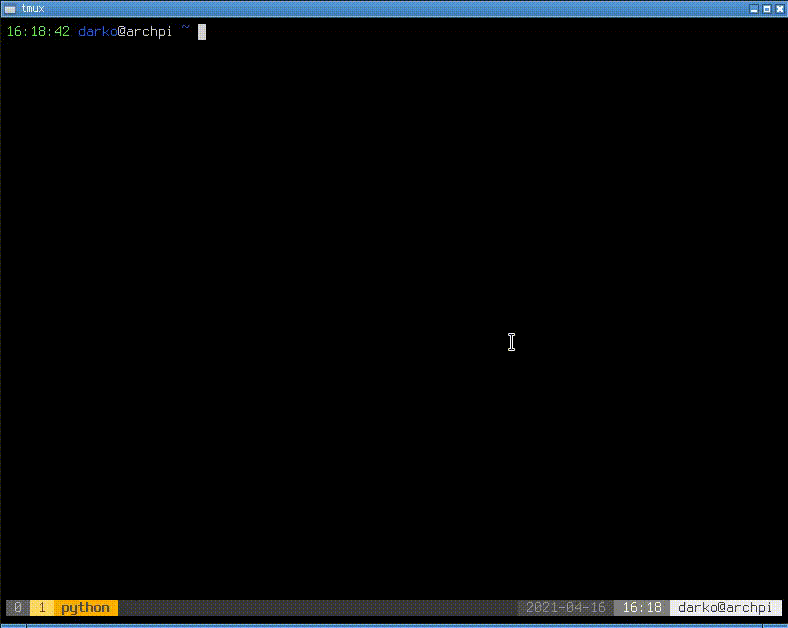Awesome vim plugins: vim-plug

Alright, time for a new segment on this blog called “Awesome vim plugins” 🎉 (or whatever …). Yes, in these kinds of posts I will present and explain some of the most useful neovim/vim plugins out there. Of course, I will start with the plugins I use every day, but may expand this on to other plugins. These posts will be short and to the point, so you may get to using these plugins as soon as you can. Think of it as those YouTube minecraft videos - Mod spotlights, but this time Plugin Spotlighs! Ooh that is even a better name.
Let’s start with the most important plugin of them all. The plugin to plugin in all the plugins (yes I know). A plugin that enables you to easily get and manage other plugins you see out there. The plugin that makes plugin management, easier. Let’s talk about vim-plug!
According to their Github page, vim-plug is a minimalistic plugin manager. Simple as that! Now just to explain why is this important: manual plugin management can be a mess. You need to clone the repositories of your favorite plugins the right location, delete the repositories when you no longer hava need for them, and just keeping all that tracked is what frustrates me. Enter - Plugin managers! Vim plugin managers, allow you to simply (with a single line of code) add or remove new plugins to your vim setup - yes thats it. But it is very important, as it helps us lazy people. There are many vim plugin managers, but I decieded to talk about this, one as it suits my needs best.
Installation
How to get started with vim-plug, well this is the plugin you actually need to install manually. But hey, better one than ten. So, how do you go about doing that? It’s all explained on their github page, but let me give you the gist of it.
- Download plug.vim
- Place this file into your
autoloaddirectory - it’s usually in$HOME/.vim/autoload/
Thats it? Well almost, we just need to modify our .vimrc file so we
load vim-plug at the start. Let me show you how I do it, but beware that the
paths may differ on your setup. Here is how I have it configured:
" auto-install vim-plug
if empty(glob('~/.config/nvim/autoload/plug.vim'))
silent !curl -fLo ~/.config/nvim/autoload/plug.vim --create-dirs
\ https://raw.githubusercontent.com/junegunn/vim-plug/master/plug.vim
autocmd VimEnter * PlugInstall | source $MYVIMRC
endif
call plug#begin('~/.config/nvim/autoload/plugged')
" THIS IS WHERE THE PLUGINS GO
call plug#end()
" Automatically install missing plugins on startup
autocmd VimEnter *
\ if len(filter(values(g:plugs), '!isdirectory(v:val.dir)'))
\| PlugInstall --sync | q
\| endif
Okay there are a a few things to unpack here, as this is not your standard installation. I’ve added a few bells and whistles to it. Let’s talk about it.
Configuration
The first part of my configuration of vim-plug is related to automatic installation of the same. Wait what? Yes, I did not even need to download vim-plug and place it in the right directory. This little snippet of configuration is verifying if vim-plug is installed. and if it is not, it downloads it into the right directory. 💥
" auto-install vim-plug
if empty(glob('~/.config/nvim/autoload/plug.vim')) " check if installed
" if not: download it with curl
silent !curl -fLo ~/.config/nvim/autoload/plug.vim --create-dirs
\ https://raw.githubusercontent.com/junegunn/vim-plug/master/plug.vim
" run PlugInstall at the end
autocmd VimEnter * PlugInstall | source $MYVIMRC
endif
Now, on to the actual configuration of vim-plug. Here you can see two calls
being made plug#begin and plug#end. This is where the
magic happens. Between these two lines you define which plugins are going to be
installed. Remmember, the plugins you wish to install, need to be between
these two lines.
Yep, thats it. Just add each of the plugins line by line, and let vim-plug
handle the rest. How it works is by prefixing the github-username/repo-name with
the Plug prefix. You can also add some additional things to be done
after the installation is done (eg. run a specific command).
call plug#begin('~/.config/nvim/autoload/plugged')
" THIS IS WHERE THE PLUGINS GO
" FZF
Plug 'junegunn/fzf', { 'do': { -> fzf#install() } }
Plug 'junegunn/fzf.vim'
" vim tmux navigator
Plug 'christoomey/vim-tmux-navigator'
call plug#end()
And Finally - let’s add a feature to automatically install newly added plugins.
This snippet just runs the PlugInstall command everytime vim is
loaded. This goes over all the installed and defined plugins in the
configuration file. If something is missing it installs it. And if something is
removed it gets rid of the files.
" Automatically install missing plugins on startup
autocmd VimEnter *
\ if len(filter(values(g:plugs), '!isdirectory(v:val.dir)'))
\| PlugInstall --sync | q
\| endif
If you do not wish to have vim-plug install these automatically, you can execute
it by running :PlugInstall from within vim.

Summary
That’s it - the first of many plugins for vim that you should use. Make sure to have vim-plug as a mainstay of your vim configuration, as it makes plugin management so much easier.
Stay tuned for more Awesome Plugin posts!
Do check out my neovim configuration files here.
